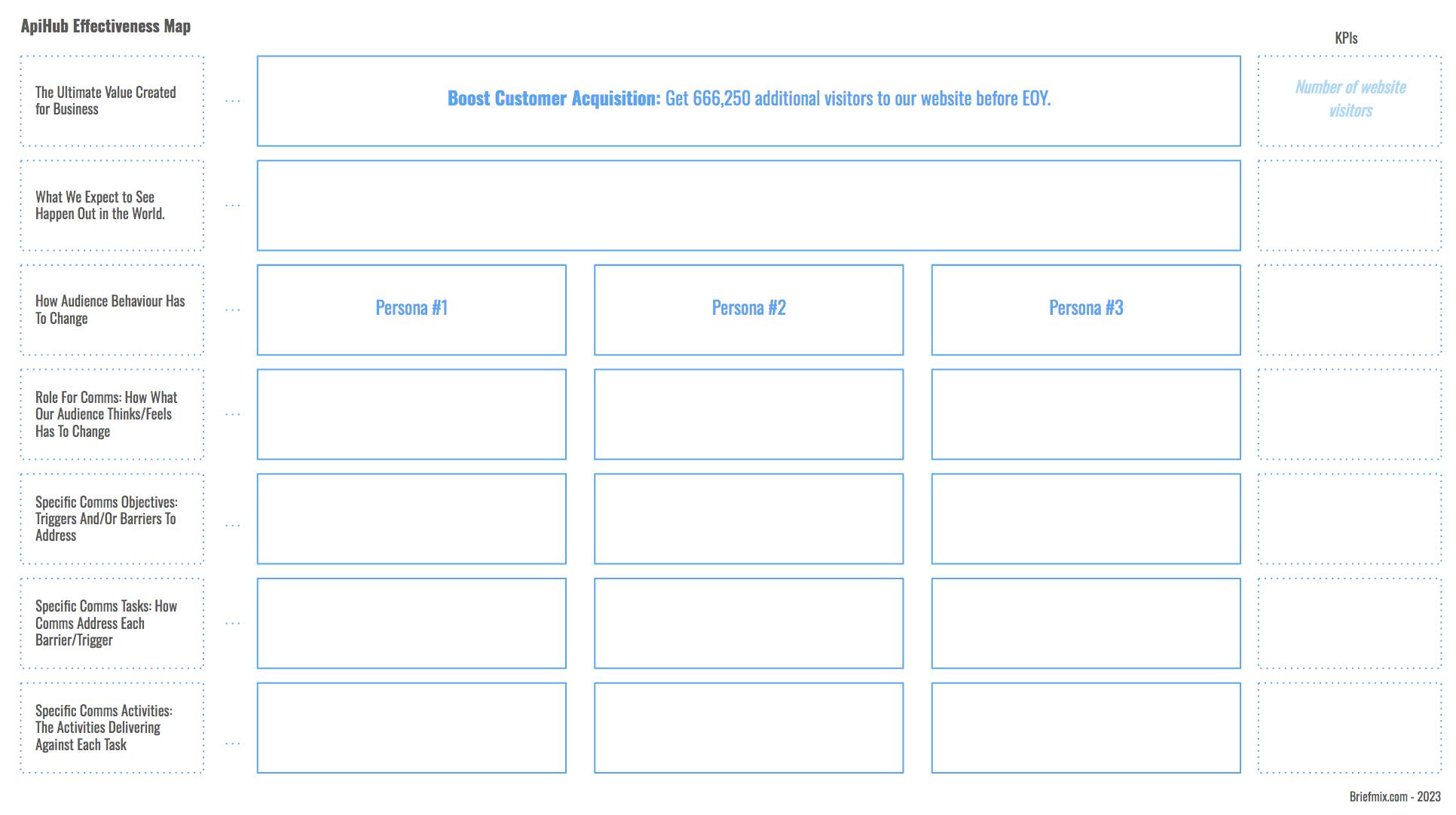1.01 - Objectives, KPIs and the effectiveness framework
Spending $1,500,000 on Ads Without Getting a Single Customer
"Don't invest in marketing" might be one of the most common startup recommendations - but when should you? In this article we'll explore when to invest in marketing and how to avoid losing millions of dollars by setting sequential marketing objectives.
Johan Friedner // 2023-08-02
I once joined a company as a consultant - in the previous 12 months, they'd spent their entire $1,500,000 yearly marketing budget on Google/Facebook ads. Using Hubspot we could track leads through the funnel and look at exactly how many customers this spend had generated. The answer was 0. In total, the ads brought in two leads to the website who never even booked a demo for the product. For $1,500,000.
Marketing can be expensive and drain your runway if done incorrectly, without a valid strategy and clear objectives. This is why accelerators like YC prefer cold outreach / emailing prospects during the early days of your company. Sales > marketing.
But how do you know if your business is ready to invest in marketing? To answer this question, you'll need to understand if your company has some form of product market fit (PMF). There are many ways you can define PMF:
In 2009, Sean Ellis, also known as the founder of Growth Hacking, wrote that he identified Product-Market fit with the help of a survey. He asks the users of a product however they would be disappointed if the product would no longer be available. If at least 40% of users say they would be very disappointed, it probably means that you have Product-Market Fit.
Further, he adds that “Admittedly this threshold is a bit arbitrary, but I defined it after comparing results across nearly 100 startups. Those that struggle for traction are always under 40%, while most that gain strong traction exceed 40%.”
There are more abstract definitions which say that PMF has been achieved when your company is drowning in demand - without time or resources to scale. I don't like this definition as much because it's only the ultimate form of PMF from a VC perspective and it doesn't take into account your positioning. Maybe you have PMF in an undiscovered segment? Maybe your communication is off? If a kid sells lemonade on a sunny day, they can still make bank even if the line to the stand isn't running around the block.
The goal of e.g. paid marketing is to find a predictable method where you spend e.g. $1,000 and expect a 3x return of $3,000 in profit (a model that can be tweaked, improved and should scale with your marketing budget). If it's clear that your product don't have any PMF, this is unachievable and a waste of money. Instead, invest your budget in product development to reach PMF.
If you have product market fit
Congratulations! You've got over the hardest part of starting a startup and can start investing in your marketing efforts.
The basis of a good marketing strategy is aligning it with your business objective(s) - no more lofty "number of likes" metrics. Start at the top - here are some examples of marketing objectives to choose from:
- Boost Customer Acquisition: Attract new customers to expand your customer base and drive revenue growth.
- Increase Market Share: Expand the percentage of the market your business serves, often achieved by outperforming competitors or acquiring new customers.
- Market penetration: If your startup is expanding to new markets, the marketing objective could be to increase market penetration in those regions.
- Improve Brand Awareness: Enhance the recognition and visibility of your brand among the target audience, leading to increased trust and customer loyalty.
- Enhance Customer Retention: Focus on strategies to retain existing customers, thereby reducing churn and fostering long-term relationships (marketing team can help with this too).
- Improve Employee Engagement (internal communication): Foster a positive work culture and invest in employee development to increase productivity and reduce turnover.
This is usually agreed on a leadership level based on what can be accomplished with the soon to be approved marketing budget. For this exercise, let's imagine a SaaS business named ApiHub, targeting B2B customers looking for an API to power their e-commerce business:
Company wide business objective for end of year (EOY):
- Increase revenue by $8,000,000
Selected marketing objective:
- Boost Customer Acquisition: Get 666,250 additional visitors to our website before EOY.
How did we arrive at this number? As a rule of thumb, the pipeline in startup SaaS businesses usually comes from:
- Marketing: 40%
- Cold-outreach/sales: 40%
- Partnerships: 20%
Hence, $8,000,000 x 0.4 / $3,000 Annual Contract Value (ACV) = 1,066 customers before EOY.
This is where your website analytics comes in handy - e.g. last year, we know that we had 1,200,000 visitors on our SaaS website. Of them, 2,000 became paying customers - hence the conversion rate from visitor to customer is 2,000 / 1,200,000 = 0.16%. If we want to understand how many additional website visitors we need to generate 1,066 more customers, we calculate (1,066 / 16) x 10,000 = 666,250 additional visitors.
Caveat: This is napkin maths - every business will need to adapt their own maths to get to their targets. You'll also have to take other factors such as quality of leads into account. But these targets are helpful guidelines that will focus your marketing efforts, regardless if you hit them or not.
How the heck do we get 666,250 new visitors?
Now what? We need to dig deeper to get to specific marketing strategies and tasks to be able to execute on. Many companies use OKRs to drill down sequential marketing objectives and specify key results that ladder back up to our overarching target. But I prefer a "effectiveness framework" used in many agencies instead.
In 2005, the UK grocery chain Sainsbury's set up a big sales goal to recover profit over a period of declining sales. With a simple equation, agency BBDO calculated that the marketing portion of this sales goal would be achieved if they got each shopper to spend an extra £1.14 every time they shopped.
This led to the campaign 'Try Something New Today', encouraging each shopper to spend an extra £1.14 every time they shopped. Analysis had shown that customers were 'sleep-shopping' and in a rut with the things they buy and cook. By using TV, press, radio and in-store advertising, Sainsbury's gave its customers simple meal ideas, which encouraged them to try new things and spend more on their shopping. The success of this campaign has generated £550 million in sales over two years.
This is a really great effectiveness case study where Sainsbury's managed to impact the bottom line using a clear marketing objective derived from their business objective. I recommend watching their short case study here.
The idea of an effectiveness framework is to clearly map out what objectives you need to hit, what consumer behaviour change needs to happen and the role and tasks of comms you need to achieve.
For our API business, the beginning of an effectiveness map might look something like this:

You can view and download this template here. We have also started to add KPIs next to the map which will be important to measure during the year to make sure our efforts are on track.
This is only the beginning to the map as we have yet to decide about the brand, marketing mix, tactics and channels. As we progress through the course, we will loop back to this map and fill it out further.
And there we have it! Before we can start filling out the rest of the framework with tactics, we need to have a good understanding of our brand and what we stand for. Let’s start by understanding why a third of Coca Cola's market value comes from its brand:
Next module: How do you define a brand? ->
Subscribe at the top of the page to be notified when a new article comes out.
Share with a colleague:
Link copied to clipboard!

